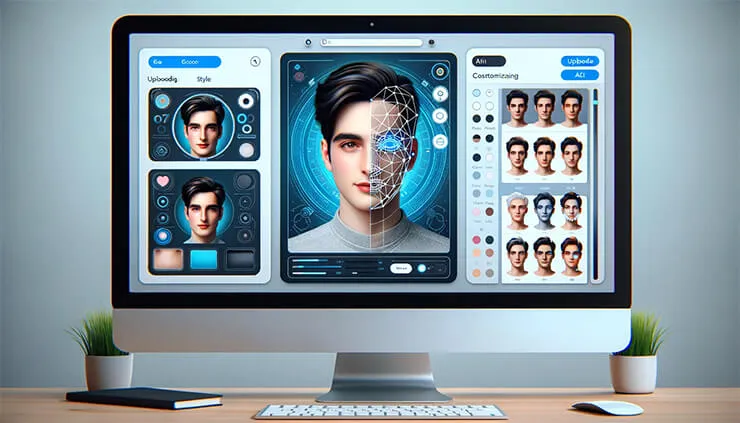Introduction
In recent years, artificial intelligence has revolutionised various sectors, and the field of digital imagery is no exception. AI avatar generators have emerged as a groundbreaking tool, redefining the way individuals and businesses create and utilise visual representations. These technologies allow users to create personalised and diverse avatars that can represent them in digital spaces. This blog explores how AI avatar generators are transforming visual representation, enhancing personalization, inclusivity, and creativity in digital interactions.
The Rise of AI in Visual Media
The integration of AI in visual media isn’t new, but the advent of AI avatar generators has taken it to a new level. Initially, digital avatars were simple, often generic representations used in video games and online forums. Make a digital clone of yourself with an AI avatar generator. Just upload a video, and our AI will quickly create a lifelike avatar for you. However, with AI, these avatars have become highly customizable and can now better represent the individuality of users. Companies like Invideo AI, NVIDIA and Adobe are at the forefront, developing technologies that enable realistic and diverse avatar creation.
How AI Avatar Generators Work
AI avatar generators use a combination of machine learning algorithms and graphic design software to create personalised avatars. Users can input physical features, clothing preferences, and even personality traits, which the AI then uses to generate a digital likeness. Advanced algorithms such as Generative Adversarial Networks (GANs) are often employed to refine these avatars, making them more realistic and visually appealing.
Benefits of AI Avatars in Social Media
On social media, AI-generated avatars are changing how we present ourselves online. These avatars offer a form of visual identity that can be more expressive and dynamic than traditional photographs. For individuals concerned about privacy, AI avatars provide a way to engage online while keeping their real identity somewhat obscured. Businesses are also using these avatars to create unique brand mascots or to personalise customer service with AI-driven chatbots.
Enhancing Gaming and Virtual Reality
In gaming and virtual reality, AI avatars are enhancing user experience by allowing gamers to create characters that look more like themselves or who embody their ideal fantasy personas. This personalization is enriching the gaming experience, making it more immersive and engaging. In virtual reality environments, these avatars help in creating a more cohesive and interactive social experience, bridging the gap between virtual and real-world interactions.
Promoting Inclusivity and Diversity
One of the most significant impacts of AI avatar generators is their ability to promote inclusivity and diversity. Traditional avatar creation tools often lacked diversity in skin tones, facial features, and body types. AI-driven tools are designed to include a wide range of ethnicities, genders, and other identifiers, providing options that reflect the real world more accurately and inclusively.
Challenges and Ethical Considerations
Despite their benefits, AI avatar generators come with challenges and ethical considerations. Issues such as data privacy, the potential for creating reinforcing stereotypes need careful navigation. Ensuring these technologies are used responsibly involves robust data protection measures, transparency in AI processes, and ongoing dialogue about ethical AI use.
Future Trends and Innovations
Looking ahead, AI avatar generators are expected to become even more sophisticated. Future developments may include more nuanced emotional expressions and interactions that mimic human behaviour more closely. Innovations such as 3D modelling and motion capture could also integrate with AI avatars, enhancing their realism and functionality in digital spaces.
Conclusion
AI avatar generators are redefining visual representation in profound ways. By enhancing personalization, promoting diversity, and expanding creative possibilities, these tools are not just transforming how we appear in digital realms they are reshaping our digital identities. As we continue to integrate digital and physical lives, AI avatars stand at the forefront of this convergence, heralding a new era of digital interaction that is as diverse and dynamic as the human experience itself.
